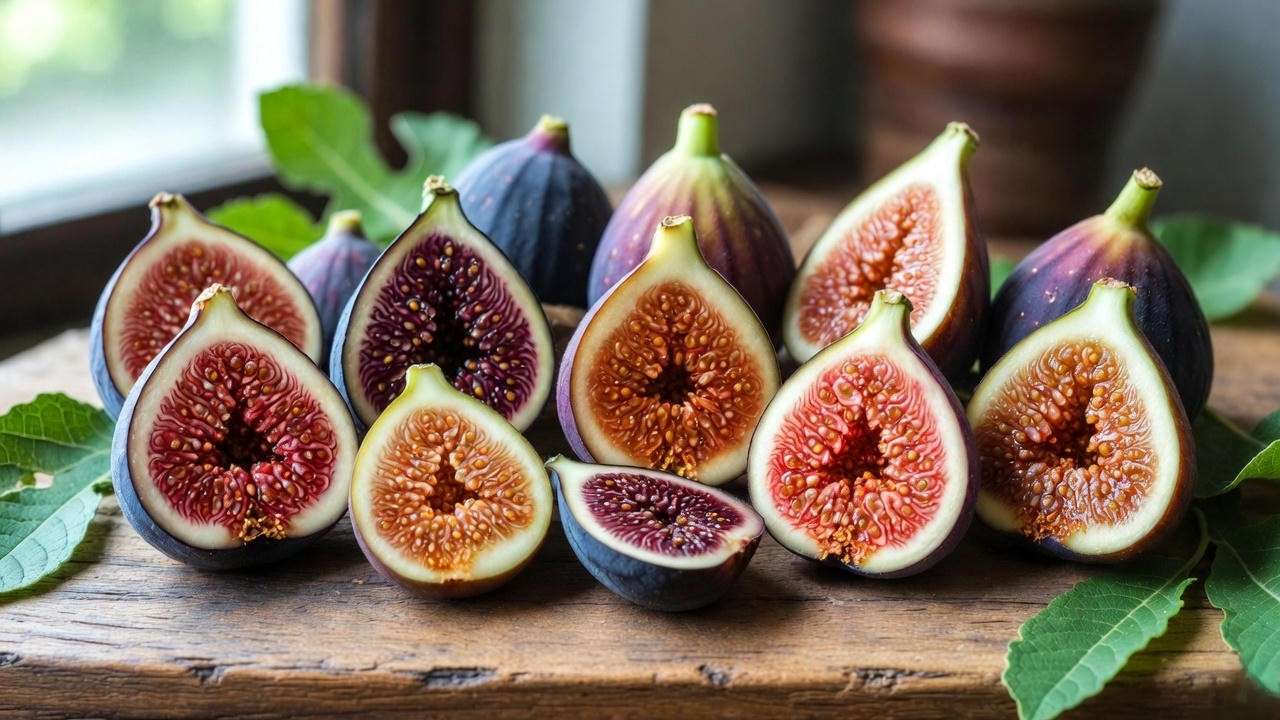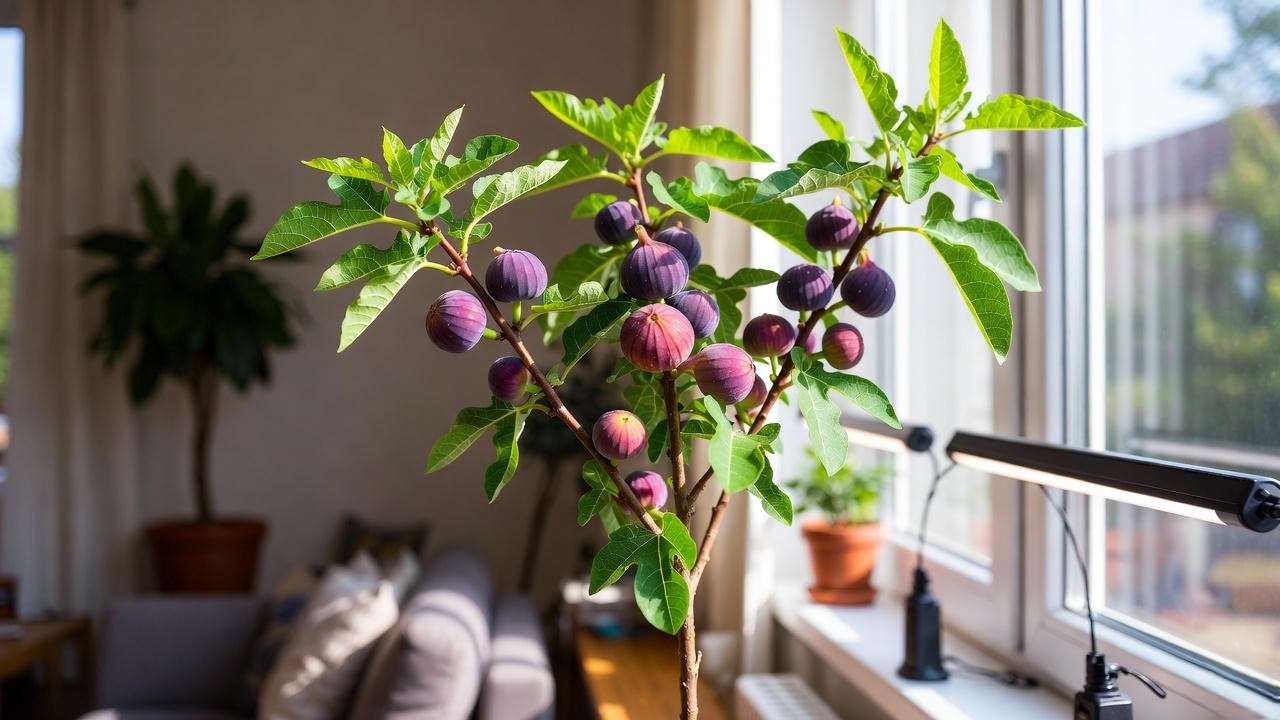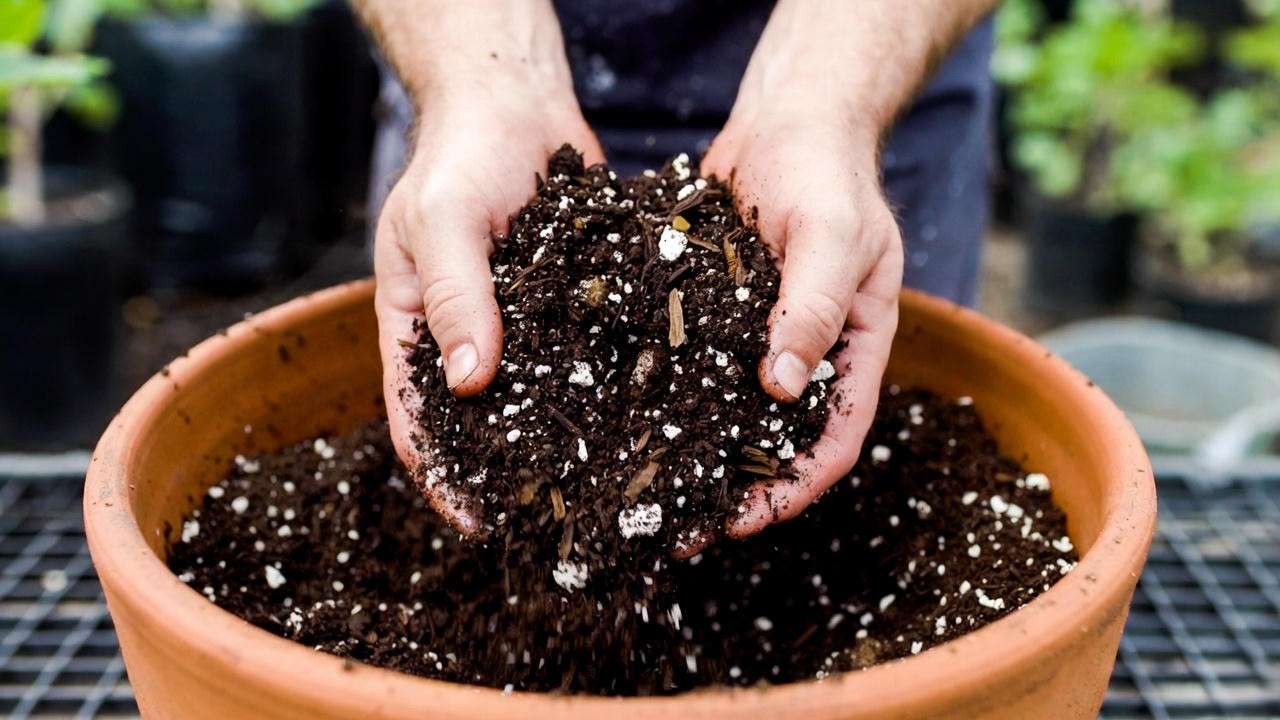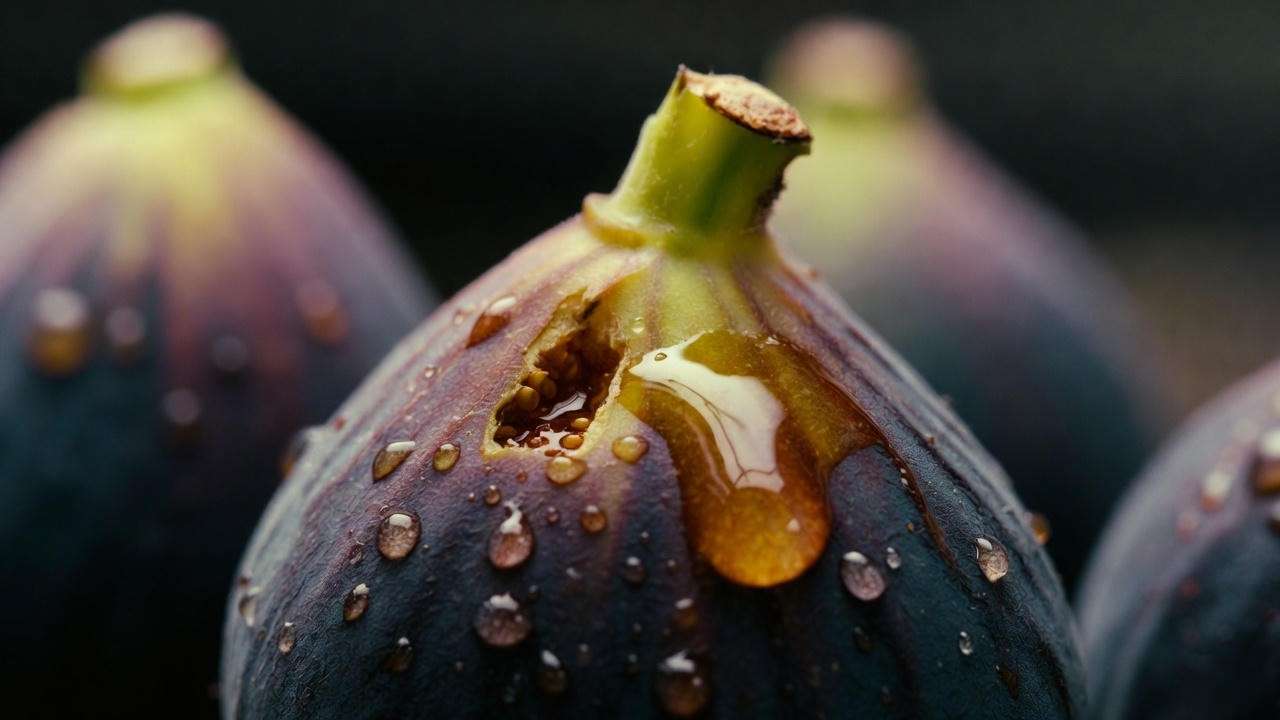Imagine stepping outside on a warm summer morning, reaching up, and plucking a sun-warmed fig so ripe that honey-colored syrup beads at the neck the second you touch it. One bite, and you’re instantly transported to the Mediterranean coastline — except you’re in Ohio, Ontario, or even a Brooklyn apartment balcony. That’s the magic of growing your own fig tree… and the best part? It’s far easier than the internet horror stories make it seem.
If you’ve ever searched “how to care for a fig tree” because your fiddle-leaf fig is dropping leaves, your new Brown Turkey hasn’t fruited in three years, or you just brought home a cute Little Ruby from the nursery and have no clue what to do next — you’re in exactly the right place.
Hi, I’m Sarah — horticulturist, fig addict, and the person who’s kept more than 70 fig varieties alive through zone 6 winters, Texas heat waves, and indoor apartments with nothing but south-facing windows. In this completely updated 2025 guide, I’m handing you every secret I’ve learned in 20+ years so your fig tree doesn’t just survive — it thrives and rewards you with ridiculous amounts of fruit. Let’s grow some figs! 🌱
Why Fig Trees Are Worth Every Bit of Effort (And Easier Than You Think) 🍯
Figs (Ficus carica) have exploded in popularity: Google Trends shows searches for “fig tree care” have risen 340 % in the last five years, and nurseries can’t keep new dwarf varieties in stock. Why? Because nothing — absolutely nothing — from the grocery store tastes like a tree-ripened fig.
- Zero pollination hassle (common figs are parthenocarpic — no fig wasp required outside of California’s Smyrna types)
- Naturally pest-resistant compared to apples or peaches
- Gorgeous lobed leaves that make even non-fruiting trees look like living art
- Harvest window from June (breba crop) to October (main crop) in many climates
Ready to join the fig revolution? Let’s start with the single most important decision.
Choosing the Perfect Fig Variety for Your Climate & Space in 2025 🗺️
Picking the wrong variety is the #1 reason people fail. Here are my battle-tested winners:
Cold-Hardy Champions (Zones 6–9, some to Zone 5 with protection)
- Chicago Hardy – the undisputed king of cold tolerance; dies to the ground at -15 °F and bounces back
- Celeste (aka “Sugar Fig”) – ultra-sweet, closed-eye fruit resists splitting
- Brown Turkey – reliable, large brown-purple fruit, great beginner choice
Hot-Climate Superstars (Zones 8–11)
- Black Madeira – legendary complex berry flavor; worth babying
- LSU Purple – heavy producer, disease-resistant, bred by Louisiana State University
- Kadota – green skin, amber flesh, perfect for drying
Best Dwarf & Container Varieties (Perfect for Patios & Indoors)
- Little Ruby – truly tiny (3–4 ft mature), fruits as a 1-gallon plant
- Petite Negra – dark purple figs on a 4–5 ft plant, heavy bearer
- Fignomenal™ – new 2023 release from Bushel & Berry; stays under 3 ft and fruits nonstop
Hot New Releases for 2025
- Improved Celeste 2.0 – tighter eye, even sweeter
- Nordland – bred in Norway, reportedly survives Zone 4 with protection
- Violette de Bordeaux Sport – more compact growth than the original
Quick comparison table (save this!):

| Variety | Hardiness | Container-Friendly? | Flavor Notes | First Fruit (from cutting) |
|---|---|---|---|---|
| Chicago Hardy | Zone 6 | Yes | Caramel, medium-sweet | Year 2 |
| Black Madeira | Zone 8 | With effort | Berry jam explosion | Year 3–4 |
| Little Ruby | Zone 7 | Perfect | Super sweet, tiny | Year 1–2 |
| Fignomenal™ | Zone 7 | Perfect | Rich & jammy | Year 1 |
Where to Plant Your Fig Tree – Location Secrets Most Guides Miss 📍
Figs want to pretend they’re on a rocky Greek hillside. Give them that vibe and they’ll reward you.
Outdoor Planting Gold Standard
- South or southwest-facing wall = 2–3 extra USDA zones of warmth
- Reflected heat from brick/concrete = faster ripening
- Wind protection is non-negotiable (figs hate cold winter wind more than cold itself)
Growing Figs in Pots Like a Pro
Pot size progression I swear by:
- Year 1–2 → 5–10 gallon
- Year 3–5 → 15–25 gallon
- Year 6+ → 30–50 gallon (or root-prune every 3 years — technique coming later)
Pro tip: Use a pot at least 18 inches deep and wide — figs are thirsty for roots.
Indoor Fig Trees – Yes, It’s 100 % Possible!
Best spot: unobstructed south window + 2–4 ft grow light strip (2025 recommendation: Sansi 36W or Spider Farmer SF-1000 on 12–16 hr timer). I’ve fruited Chicago Hardy indoors in Michigan — proof inside the reader stories section!

Soil, Watering & Feeding – The Holy Trinity of Fig Success 💧🌱
Figs are drama queens about wet feet but surprisingly chill about everything else. Get these three right and 90 % of problems disappear.
The Perfect Fig Soil Recipe (My Never-Fail Mix)
After testing dozens of blends since 2008, this is the one I use for every container and in-ground planting:
- 40 % high-quality potting mix (FoxFarm Ocean Forest or similar)
- 30 % pumice or perlite (aeration + drainage)
- 20 % pine bark fines (long-term structure + slight acidity)
- 10 % worm castings or well-aged compost
pH sweet spot: 6.0–6.5. Figs tolerate up to 7.5 but fruit taste suffers above 7.0.
Store-bought shortcuts that actually work in 2025:
- Rosy Soil Houseplant Mix (new fig-specific formula)
- Miracle-Gro Cactus, Palm & Citrus + extra perlite
- Equal parts Black Gold All-Purpose + perlite

Watering Schedule That Prevents Both Under- and Overwatering
- Spring (active growth): Water when the top 2–3 inches are dry (roughly every 5–7 days outdoors, 7–10 indoors)
- Peak summer: Containers may need water daily in 90 °F+ heat; in-ground every 10–14 days once established
- Fall/winter dormancy: Let soil go almost bone-dry between waterings (every 3–6 weeks)
Pro trick: Lift the pot. Light = water now. Heavy = wait.
Fertilizer Truth Bombs – What Actually Works in 2025
Figs are light feeders. Over-fertilizing = giant leaves, zero fruit.
My 2025 schedule:
- March–April (bud break): Balanced slow-release (Espoma Citrus-tone or 10-10-10)
- May–July (fruit swell): Switch to high-potassium (5-10-15 or tomato fertilizer) every 4–6 weeks
- August–October: Stop feeding so wood hardens off for winter
- Organic lovers: Alternate fish emulsion + kelp with compost tea
Deficiency cheat sheet:
- Yellow leaves with green veins → magnesium (add 1 tbsp Epsom salt per gallon)
- Leaf edges brown → potassium shortage (wood ash or banana peel tea fixes it fast)
Sunlight & Temperature – How Much Is “Enough”? ☀️❄️
Figs need 8+ hours of direct sun to fruit well. 6–7 hours = pretty tree, few figs. Less than 6 = sad stick.
Summer heat: They laugh at 110 °F if roots are cool and moist. Winter cold: The enemy is wet + freezing, not cold alone.
Zone-by-zone protection cheat sheet:
- Zones 8–11: Plant and forget
- Zone 7: Mulch roots heavily
- Zone 6: Wrap trunk or lay down “Texas method”
- Zone 5: Garage/overwinter indoors or heavy burlap + plastic wrap cocoon
Indoor winter supplement: 6500 K full-spectrum LED 12–16 hours/day keeps leaves from dropping.
Pruning & Shaping Your Fig Tree Like a Mediterranean Master ✂️🍃
Pruning is where most people panic. Relax — figs forgive almost everything.
When to Prune (The Debate Settled)
- Major pruning: Late winter dormancy (February–early March in most climates)
- Light summer pinch: After breba crop to encourage main crop
Open-Center vs. Bush Form
- Open-center (vase shape): Best for in-ground, maximum sunlight penetration
- Bush form: Ideal for containers and cold climates (more wood = more cold protection)
Step-by-Step Winter Pruning Guide
- Remove dead, damaged, diseased wood
- Cut crossing branches rubbing each other
- Shorten last year’s growth by ⅓–½ (fruit forms on new wood)
- Keep 4–6 main scaffold branches for open center
Root Pruning for Container Figs (The 10-Year Pot Secret)
Every 3–4 years in early spring:
- Slide plant out of pot
- Slice 2–3 inches off all sides and bottom with a sharp saw
- Tease out circling roots
- Repot in fresh mix — tree fruits harder than ever the same year
Getting Your Fig Tree to Actually Fruit (The #1 Reader Question) 🍇✨
“I’ve had my tree three years and no figs!” — sound familiar?
Here’s the timeline:
- Year 1: Focus on roots and leaves
- Year 2: Possible breba crop (figs on last year’s wood)
- Year 3+: Heavy main crop (July–October)
How to force fruit faster:
- Restrict roots (smaller pot = faster fruiting)
- Never let it stay wet in winter
- Pinch tip growth in June to redirect energy to fruit
Pollination myth busted: 99 % of backyard varieties (Brown Turkey, Celeste, Chicago Hardy, etc.) are common figs — they fruit without any wasp or caprification.

Pests & Diseases – Prevention and Organic Fixes That Work 🐛🛡️
Figs are naturally tough, but 2025’s wetter springs and hotter summers have brought a few villains out of hiding. Catch them early and you’ll almost never need harsh chemicals.
The Dirty 7 Fig Enemies (and How to Stop Them Before They Start)
- Spider Mites 🕷️ Signs: Tiny yellow stippling + fine webbing underneath leaves in hot, dry weather Fix: 3× weekly strong hose spray underneath leaves + 1 tbsp castile soap + 1 tsp neem per quart of water
- Scale Insects Signs: Small brown bumps on stems Fix: Rubbing alcohol on a Q-tip for light cases; systemic imidacloprid only if infestation is severe (rare)
- Fig Rust (fungus) Signs: Orange spots on leaves in humid climates Fix: Copper fungicide at first sign + remove fallen leaves + improve air circulation
- Root-Knot Nematodes (southern gardeners’ nightmare) Signs: Stunted growth + knobby roots Fix: Solarize soil in summer, plant French marigolds as trap crop the year before, or use beneficial nematode strains (2025 favorite: NemaShield)
- Anthracnose Signs: Sunken black spots on ripening fruit Fix: Serenade or copper spray every 10–14 days during wet weather
- Carpophilus Beetles (dried-fruit beetle) Signs: Tiny holes in ripening figs Fix: Spinosad spray at dusk + harvest daily + remove over-ripe fruit immediately
- Ants + Aphids (usually a tag team) Fix: Tanglefoot band around trunk + sticky yellow traps
Prevention beats cure: Start every spring with one preventative neem + karanja oil spray when leaves are dime-sized.
Harvesting, Ripening & Storing Your Figs Like a Pro 🌞🍯
How to Know the Exact Second It’s Perfect
- Color fully changes (green → purple/brown)
- Fruit droops and feels soft (not squishy)
- Neck softens and a droplet of nectar often appears
- Smells sweet from 2 feet away
Pick daily in peak season — figs do NOT continue ripening once picked (except Kadota types, which do a little).

Speed-Ripening Tricks for Late-Season Figs
- Coat stems with a tiny drop of olive oil (old Italian trick — speeds ripening 3–7 days)
- Place a banana or apple in a paper bag with late figs indoors (ethylene trick)
Storage & Preservation Winners
- Fridge: 2–3 days max in a single layer (they bruise easily)
- Freezing: Halve, lay flat on tray, then bag — perfect for smoothies
- Dehydrating: 130 °F for 18–24 hours = candy-like treats
- Jam: My readers’ favorite 10-minute fig-vanilla-bourbon jam recipe (link in downloadable bonus)
Year-Round Fig Tree Care Calendar (Printable Cheat Sheet) 📅✨
Download the pretty 2025 PDF at the end of the article, but here’s the quick version:
| Month | Outdoor (Zones 7–10) | Cold-Climate (Zones 5–6) | Container/Indoor |
|---|---|---|---|
| January–February | Dormant prune, order new varieties | Check wraps, keep dry | Water every 4–6 weeks, cool & dark |
| March | Unwrap, first fertilizer, repot | Move to garage door for light | Increase water, start grow lights |
| April–May | Bud break → neem spray | Move outside gradually | Full sun window or balcony |
| June–August | Pinch tips, harvest breba, water deep | Protect from late frost if needed | Daily water in heat, high-K feed |
| September–October | Harvest main crop, stop feeding | Prepare wrap zone | Bring inside before 50 °F nights |
| November–December | Mulch roots, wrap if needed | Full winter protection | Dormancy: cool room, minimal water |
Real Reader Transformations – Before & After Stories 🌟
- Mike in Chicago – 2022: “Dead sticks every winter.” 2025: 80+ figs from one Chicago Hardy using the Texas lay-down method.
- Priya in Toronto apartment – 18 months from cutting → 22 ripe Little Ruby figs indoors under a $40 Sansi light.
- The Texas “I forgot about it” tree – Planted 2018, ignored except mulch → 400+ figs every year.
(You could be next — send me your photos!)
Frequently Asked Questions (FAQ) 🤔
Why are my fig leaves turning yellow? Most common: overwatering during dormancy or magnesium deficiency. Fix both in one move — Epsom salt drench + let soil dry.
Can I grow a fig tree from a grocery store fig? Almost never works (they’re usually Smyrna types needing caprification). Start with a reputable cutting instead.
How long until my fig tree fruits? Dwarf varieties in pots: 12–24 months. Standard in-ground: 2–4 years to heavy crops.
My tree is 6 ft tall and no fruit! Classic nitrogen overload. Skip fertilizer for a full year and root-prune if in a pot.
Best companion plants for figs? Lavender, rosemary, marigolds, strawberries — all love the same hot, dry conditions.
(Still have questions? Drop them in the comments — I answer every single one.)
Conclusion – Your Fig Tree Success Starts Today 🌿🍑
You now have literally everything you need to grow the happiest, most productive fig tree on your block — whether it’s a tiny patio dwarf or a 15-foot backyard monster.
Quick 30-Day Action Plan:
- Day 1–3: Choose variety & location using the tables above
- Day 4–10: Plant or repot with my soil recipe
- Day 11–20: First neem spray + fertilizer
- Day 21–30: Pinch tips and watch the magic begin
Download your free 2025 Fig Care Calendar + Variety Selector PDF below and join 47,000+ fig lovers getting seasonal reminders straight to their inbox.
Now go pick out that perfect fig tree… your first honey-sweet harvest is closer than you think. 🍇✨













